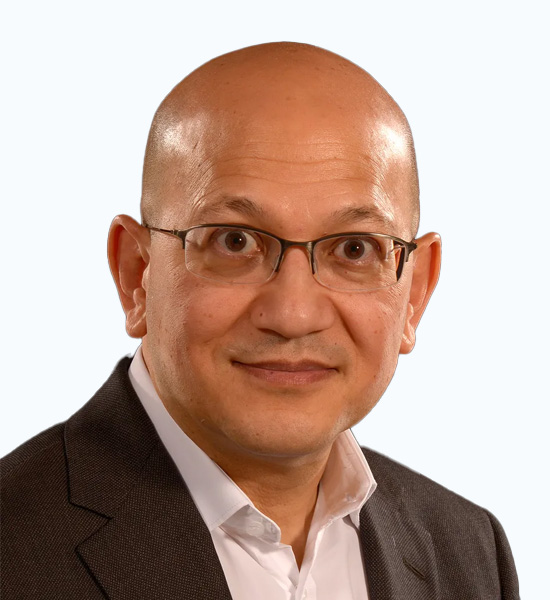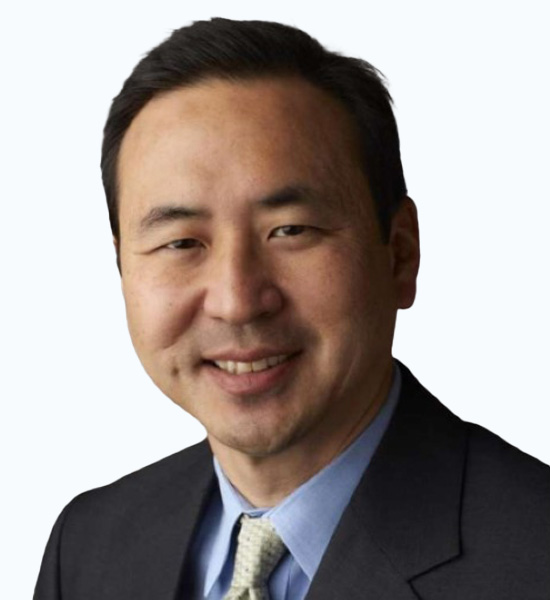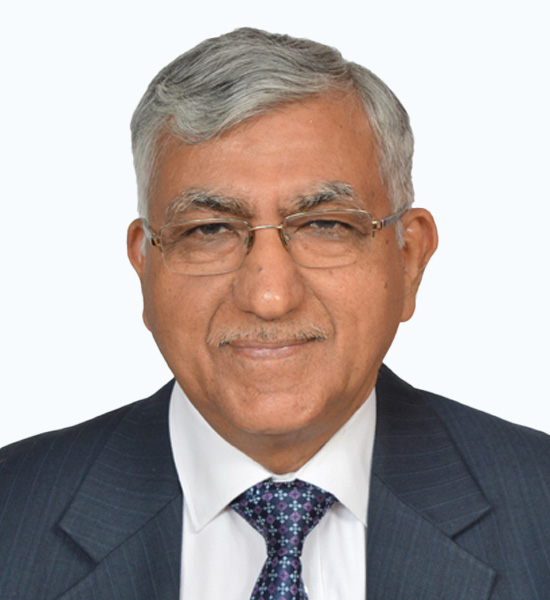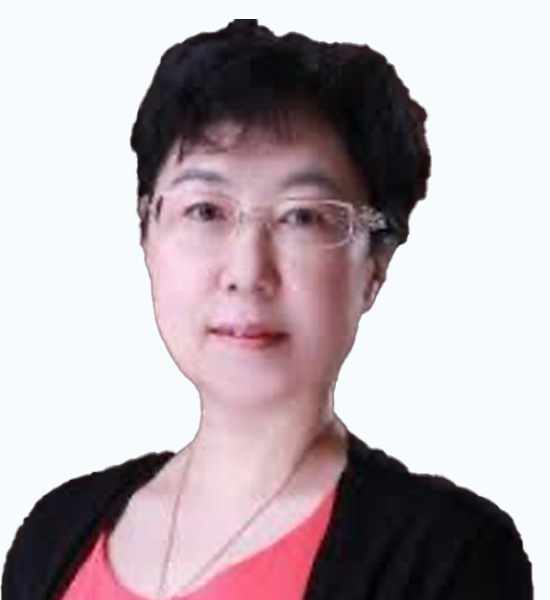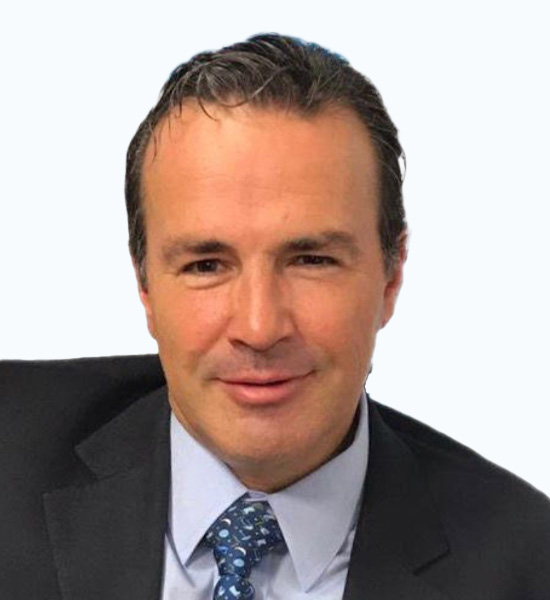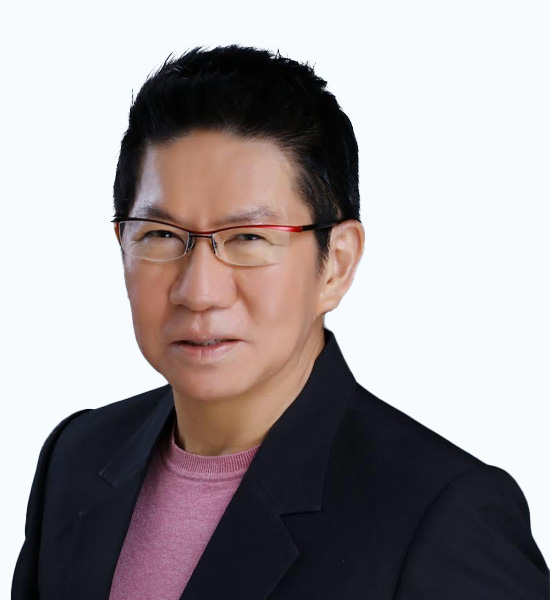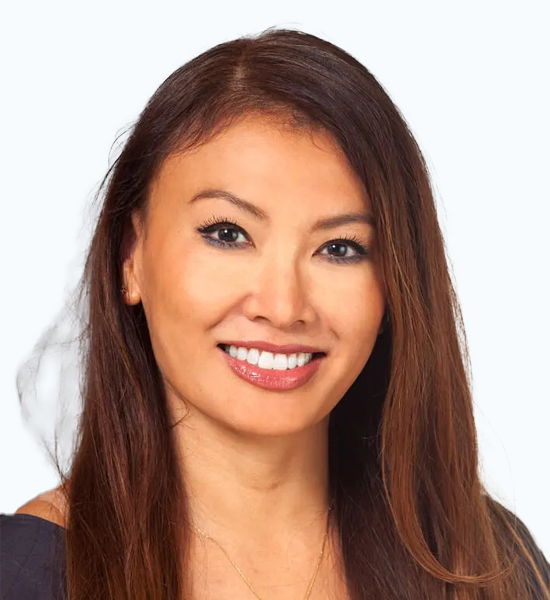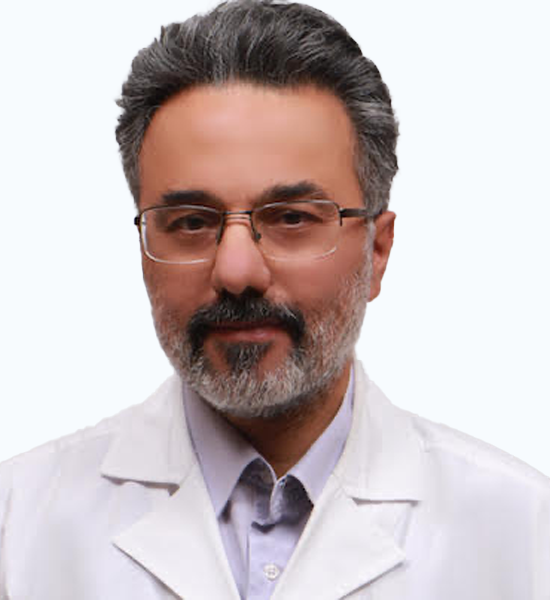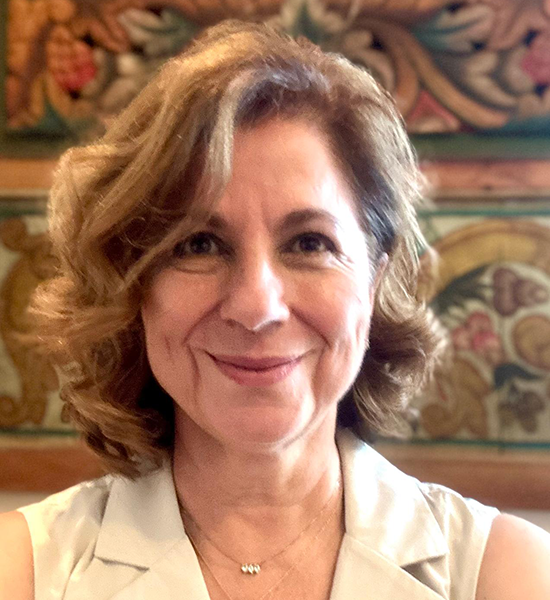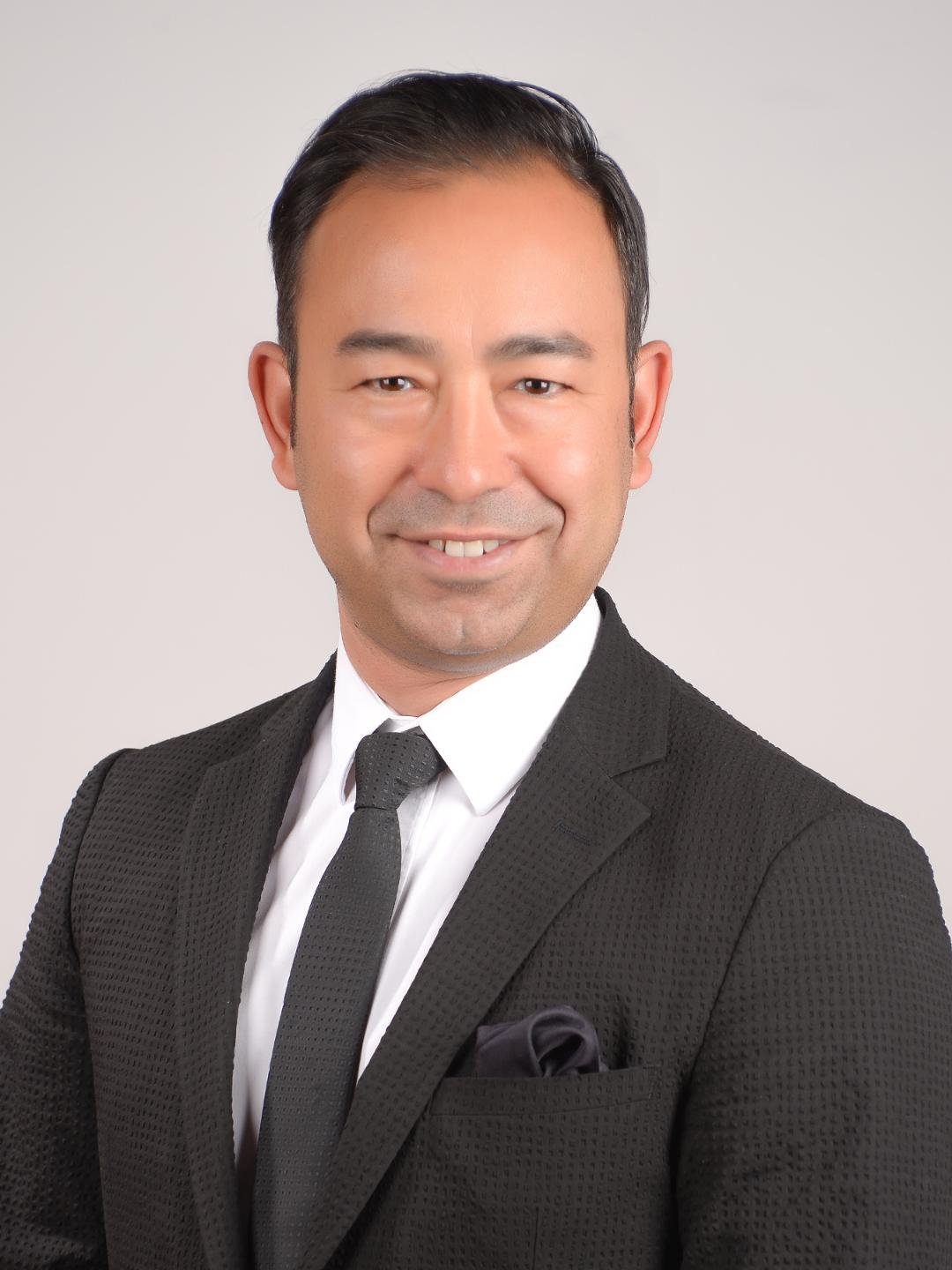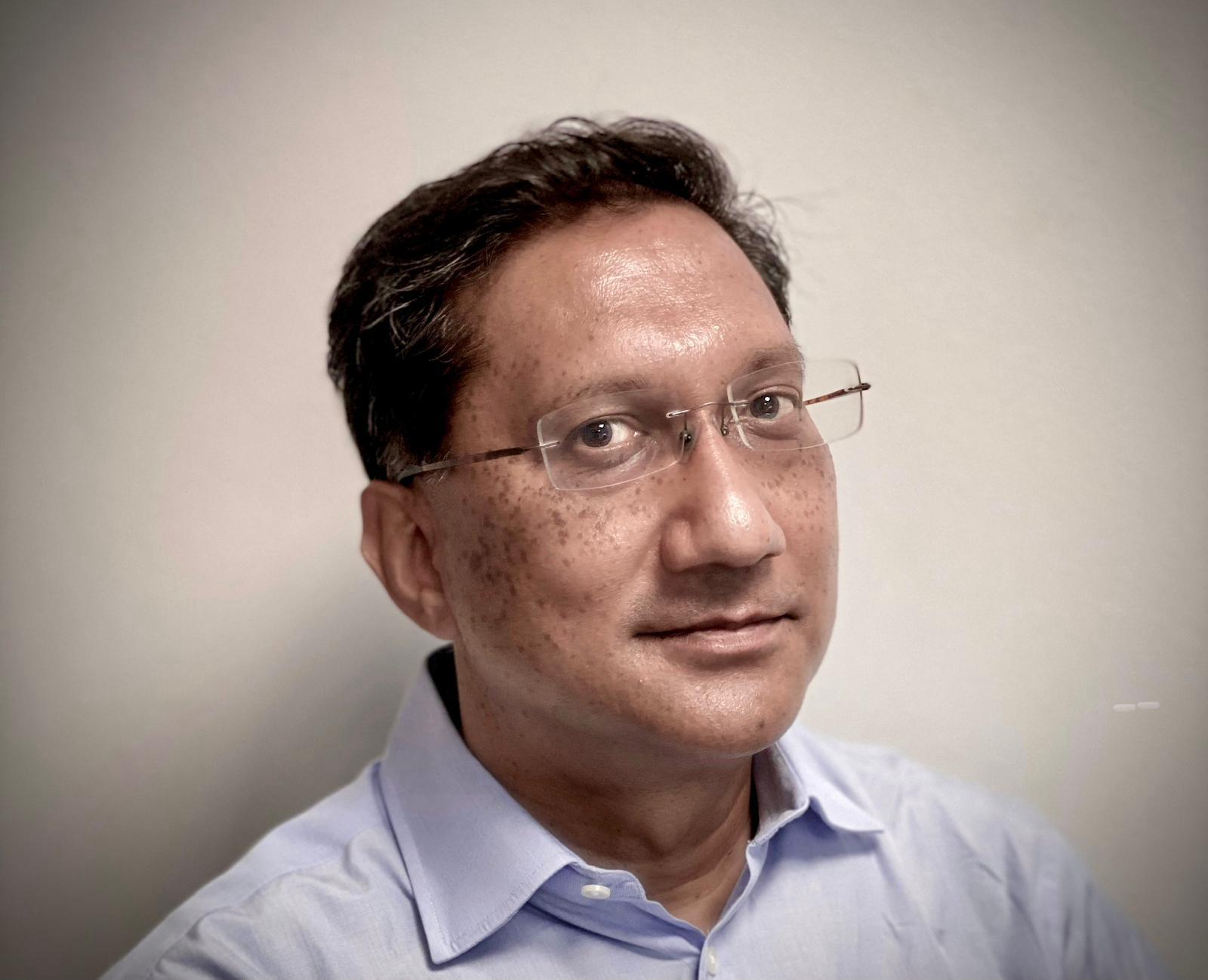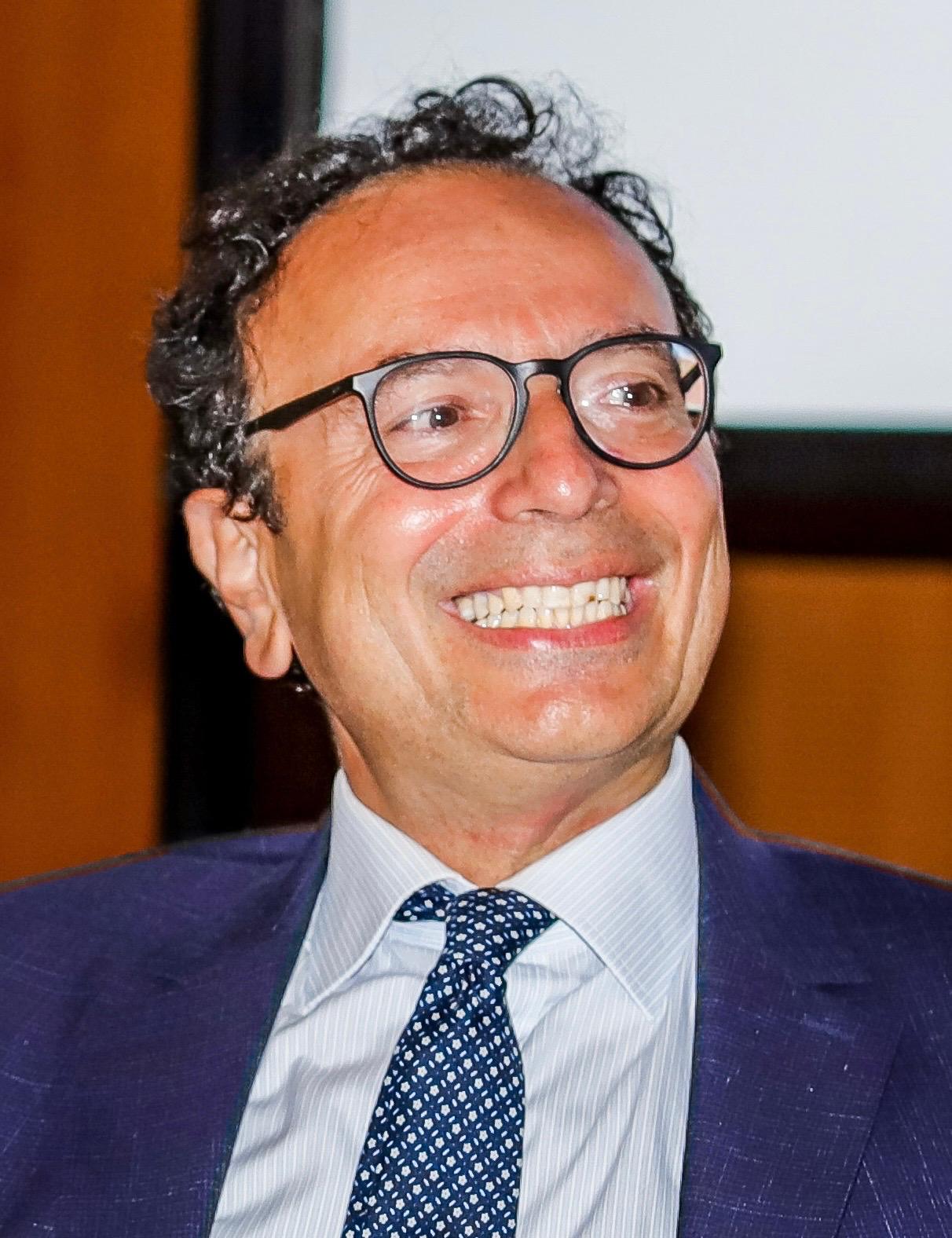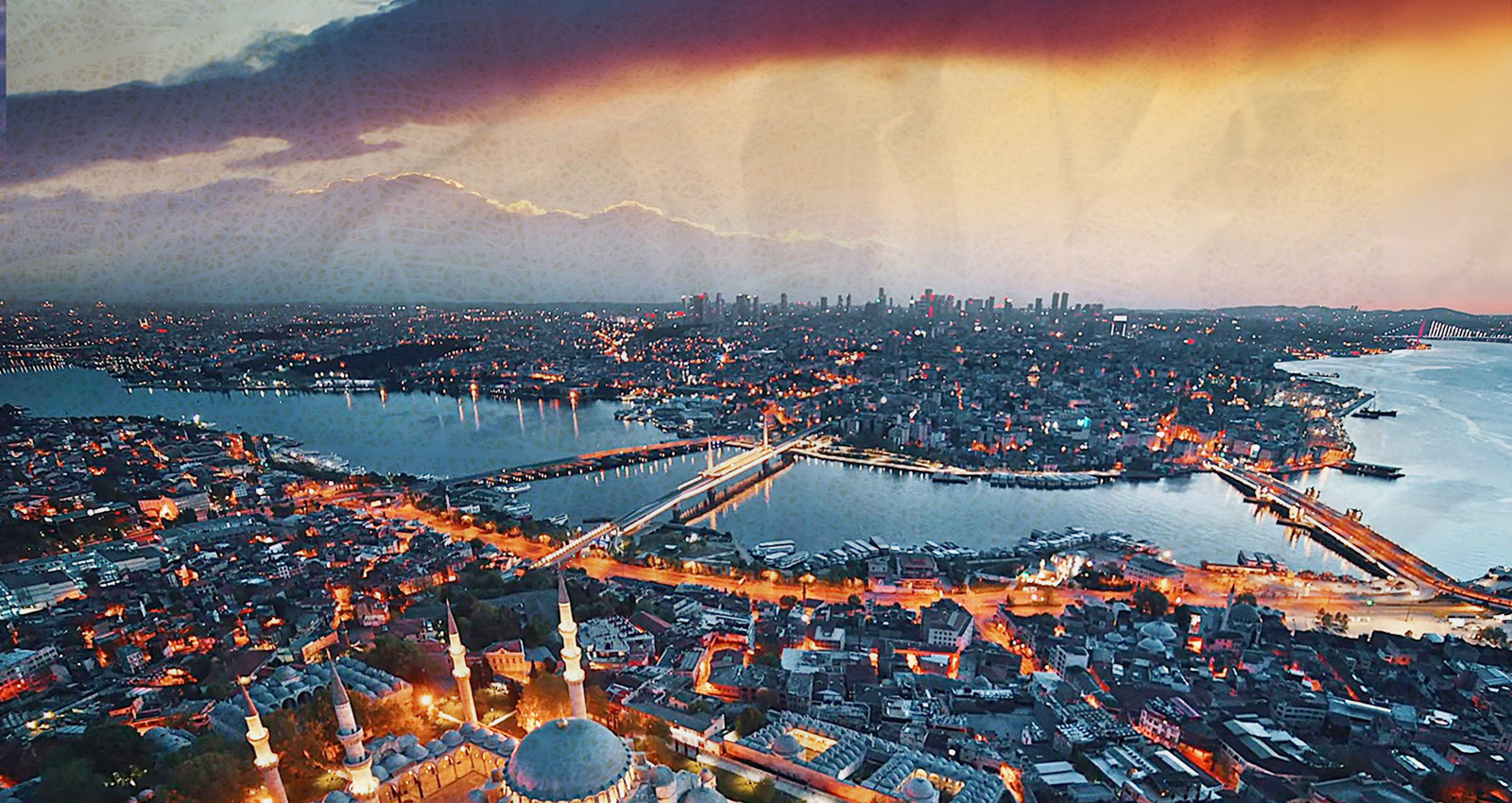
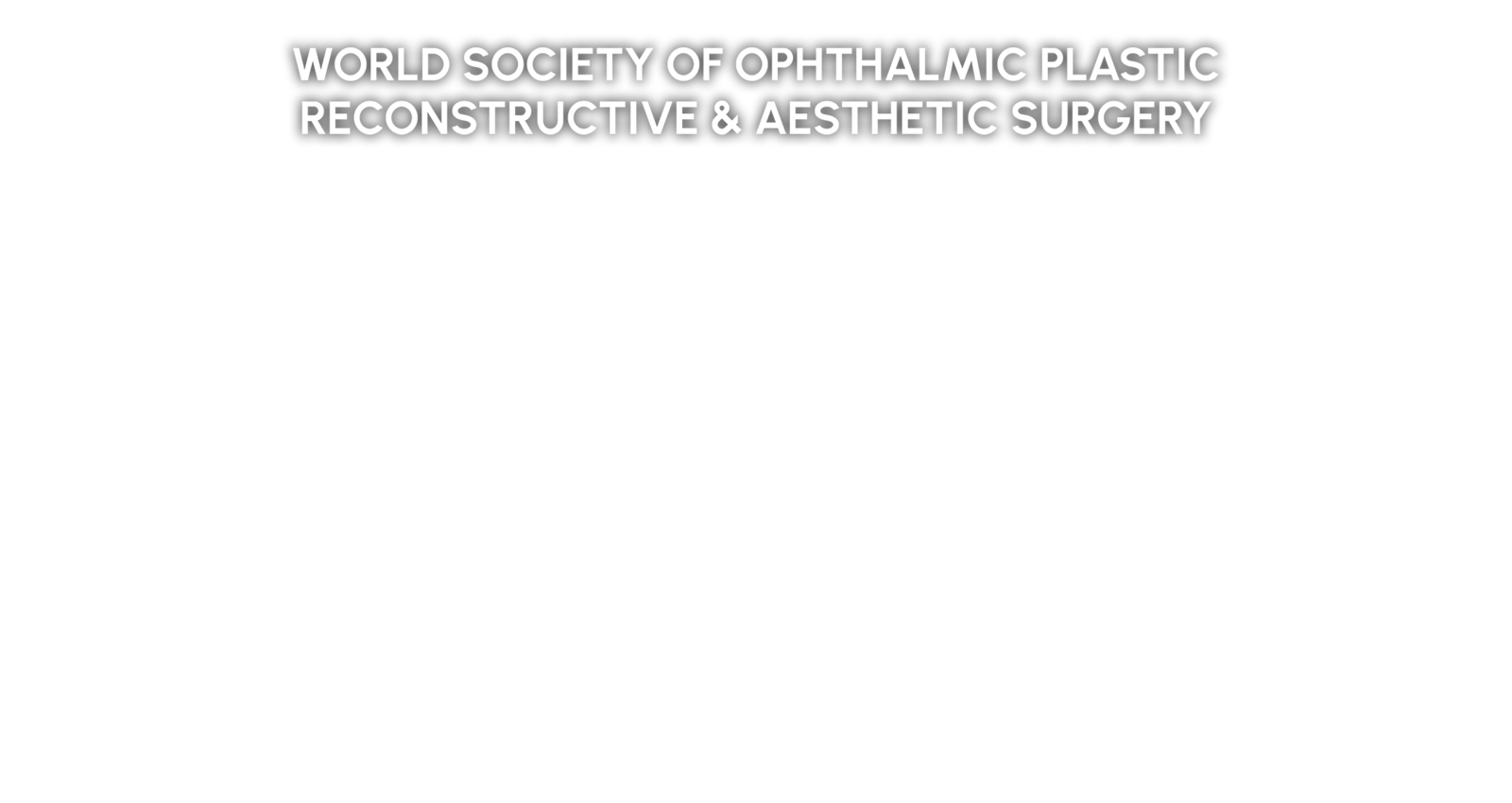

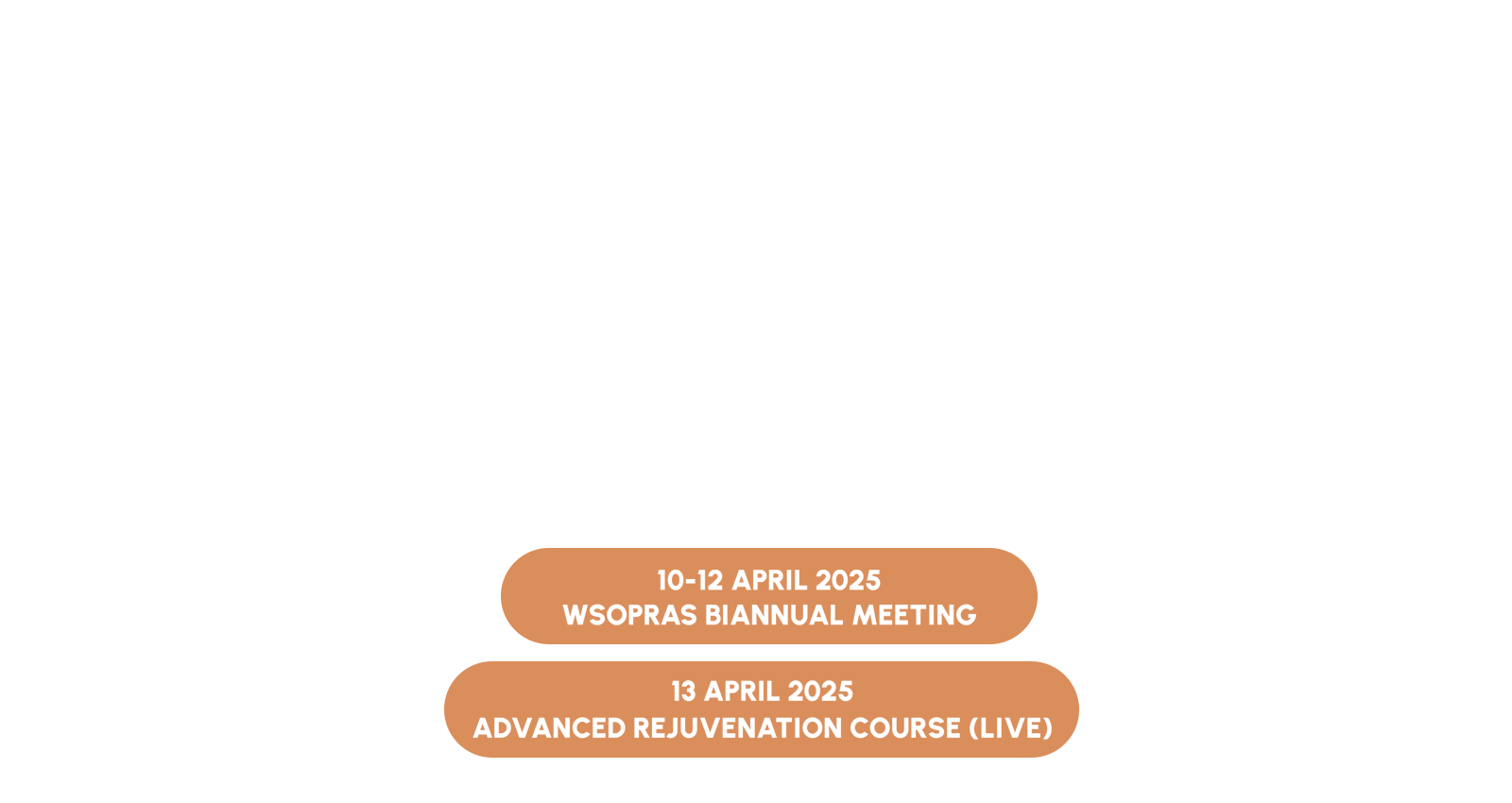
- 10 April 2025 Congress Start Date
- 13 April 2025 Congress End Date
- 10 February 2025 Early Bird Registration

- 10 April 2025 Congress Start Date
- 13 April 2025 Congress End Date
- 10 February 2025 Early Bird Registration
Dear colleagues
On behalf of the WSOPRAS council, we are delighted to invite you to WSOPRAS 2025 at the Four Seasons Bosphorus Hotel and Convention Centre in İstanbul, Türkiye from April 10th to 12th 2025 with the WSOPRAS instructional course on Sunday 13th April 2025.
WSOPRAS 2025 will continue the unique and highly successful format initiated at WSOPRAS 2023 in Dubai, universally endorsed by the attendees. This format features focused brief presentations followed by moderated debates amongst experts with active delegate participation.
For WSOPRAS 2025, we have over 180 international invited experts from every corner of the world!
Please log onto to ‘WSOPRAS 2025’ as we update our website in the coming months
Warm regards,
Dr. Naresh Joshi
Dr. Eva Dafgard Kopp
Dr. Don Kikkawa
Dr. Jose Luis Tovilla
Dr. Ashok Grover
Dr. Dong Mei Li
Dr. Vinod Gauba
Dr. Rey Javate
Dr. Naresh Joshi
Dr. Don Kikkawa
Dr. Ashok Grover
Dr. Vinod Gauba
Dr. Eva Dafgard Kopp
Dr. Jose Luis Tovilla
Dr. Dong Mei Li
Dr. Rey Javate
Local organising committee chair: Dr. Pelin Kaynak
Dr. Eva Dafgård Kopp
Local organising committee chair:
Dr. Pelin Kaynak


- 10 April 2025 Congress Start Date
- 13 April 2025 Congress End Date
- 10 February 2025 Early Bird Registration
Executive Council

- 10 April 2025 Congress Start Date
- 13 April 2025 Congress End Date
- 10 February 2025 Early Bird Registration

- 10 April 2025 Congress Start Date
- 13 April 2025 Congress End Date
- 10 February 2025 Early Bird Registration

- 10 April 2025 Congress Start Date
- 13 April 2025 Congress End Date
- 10 February 2025 Early Bird Registration

- 10 April 2025 Congress Start Date
- 13 April 2025 Congress End Date
- 10 February 2025 Early Bird Registration
Faculty

- 10 April 2025 Congress Start Date
- 13 April 2025 Congress End Date
- 10 February 2025 Early Bird Registration

- 10 April 2025 Congress Start Date
- 13 April 2025 Congress End Date
- 10 February 2025 Early Bird Registration
Scientific Program
Click here to download the Scientific Program
| 8.00 - 8.15 | Welcome Message |
| 08.15 - 09.15 | Eyelid 1: Eyelid Oncology - Controversies Session chairs: Claire Daniel, Dinesh Selva |
| Reconstruction of Large Upper Eyelid Defect - Video session | |
| Large upper eyelid reconstruction - Reverse modified Hughes procedure Wonkyung Viviana Cho |
|
| Full thickness upper lid reconstruction: An alternative technique avoiding lid closure following Mohs micrographic surgery without tarsal replacement Laura Hughes |
|
| Panel Q&A discussion | |
| Advanced Eyelid Tumors - Panel discussion | |
| Advanced eyelid basal cell carcinoma: When is medical treatment an option? Rebecca Ford |
|
| Treatment of large LM - Imiquimod/radiation Hakan Demirci |
|
| Advanced squamous cell carcinoma Bita Esmaeli |
|
| Sentinel Lymph Node Biposy in Ocular Adnexal Melanoma - A Brazilian Experience Silvia Andrade Carvalho Rodrigues |
|
| Panel Q&A discussion | |
| 09.15 - 09.45 | Eyelid 2: Treatment of Cicatricial Entropion in Conjunctival Disease Session chairs: Gerd Geerling, Saul Rajak |
| Panel discussion | |
| Anterior lamellar recession and MM /Tarsal patch grafting Raman Malhotra |
|
| PLTR and BLTR Saul Rajak |
|
| Panel Q&A discussion | |
| Entropion - Guidelines to prevent it in OCP Gerd Geerling |
|
| OCP - Conjunctiva sparing surgery Rwituja Thomas |
|
| Panel Q&A discussion | |
| 09.45 - 10.30 | Aesthetics 1: Upper Eyelid - Debates Session chairs: Audrey Looi, Karim Punja |
| Asian Eyelid Nuances: Battle of Surgical Techniques | |
| Small-incision vs full-incision surgery Chai Teck Choo |
|
| Epicanthal fold - simple vs flap technique Mike Yen |
|
| Epicanthal fold - flap vs simple technique Elaine Chee |
|
| Post operative volume complication Rui Jin |
|
| Panel Q&A discussion | |
| Tarsal vs levator fixation: Pearls for crease formation Alice Goh |
|
| Orbicularis vs skin fixation, suture type: Pearls for crease formation Lin Lyu |
|
| Medial fat debulking - should this be performed? Stephanie Young |
|
| Revision East Asian blepharoplasty challenges Vanessa Naseem Neoh |
|
| Panel Q&A discussion | |
| 10.30 - 11.00 | Coffee Break |
| 11.00 - 11.45 | Lacrimal 1: Panel discussion Session chairs: Lelio Baldeschi, Ivan Haefliger |
| Endoscopic endonasal DCR; The new gold standard? Nikolaos Trakos |
|
| External DCR; The end of an era? Yonca Özkan Arat |
|
| Endoluminal dacryoplasty; The future of lacrimal surgery? Rey Javate |
|
| Endonasal laser DCR; Is it effective? Mohammad Moin |
|
| Revision DCR Daniel Ezra |
|
| Panel Q&A discussion | |
| 11.45 - 12.30 | Orbit 1, TED-1: Shifts & Directions in Medical Treatment - Debates Session chairs: Jimmy Uddin, Lelio Baldeschi |
| Medical Treatment in the Inactive Phase? | |
| Medical treatment works in chronic phase Raymond Douglas |
|
| Medical treatment does not work in chronic phase Sandy Zhang Nunes |
|
| Combined immunosuppression/medical decompression Kelvin Chong |
|
| Panel Q&A discussion | |
| Role of TSHR Antibodies in Management of TED | |
| TSH receptor antibodies help in steering the treatment! Anja Eckstein |
|
| Role of TSH receptor antibody tests in formulation of treatment is a myth! Andrea Kossler |
|
| Panel Q&A discussion | |
| 12.30 - 12.38 | Viridian Sponsored Talk |
| Viridian Therapeutics TED clinical program update Peerooz Saeed |
|
| 12.40 - 13.40 | Lunch |
| 13.40 - 14.40 | Aesthetics 2: Upper Eyelid - Debates Session chairs: Rob Fante, Ahmed Ben Said |
| Blepharoplasty in the TED Patient | |
| Upper lid malposition and blepharoplasty: Anterior approach Miguel Gonzales-Candial |
|
| Upper lid malposition: Posterior approach Milind Naik |
|
| Lower lid malposition management option 1 Fernando Procianoy |
|
| Lower lid malposition management option 2 İlke Bahçeci Şimşek |
|
| Panel Q&A discussion | |
| Surgical Correction of Asymmetrical Upper Eyelid Volume | |
| Managing asymmetrical upper eyelid volume: Differential skin crease placement Yvette Santiago Gatmaitan |
|
| Managing asymmetrical upper eyelid volume: Orbicularis resection vs retention Tammy Osaki |
|
| Managing asymmetrical upper eyelid volume: Fat release, repositioning, fat graft Cecilia Rodríguez Luna |
|
| Managing asymmetrical upper eyelid volume: Browplasty, subbrow blepharoplasty Audrey Looi |
|
| Panel Q&A discussion | |
| 14.40 - 15.10 | Aesthetics 3: Managing Aesthetic Surgery Complications: Cases and Panel Discussion Session chairs: Santiago-Ortiz Perez, Mahmoud Al Salem |
| Intro | |
| Case 1: Postblepharoplasty lower eyelid retraction Mikhail Kataev |
|
| Panel Q&A discussion | |
| Case 2: Fat granulomas after repositioning or fat transfer Cameron Nabavi |
|
| Panel Q&A discussion | |
| Case 3: Management of recurrent lower eyelid oedema after hyaluronic acid filler injection Reili Rebane |
|
| Panel Q&A discussion | |
| Case 4: Surgical debulking of retained filler after hyaluronidase Jeremiah Tao |
|
| Panel Q&A discussion | |
| 15.10 - 15.40 | Coffee Break |
| 15.40 - 16.25 | Orbit 2: Challenging Situations in Orbit: Case Presentations and Panel Discussion Session chairs: James Garrity, Robert Kersten |
| Case 1: Challenging recurrent orbital tumor Mark Lucareli |
|
| Panel Q&A discussion | |
| Case 2: Orbital apex syndrome in a patient with orbital tuberculosis Honey Teo |
|
| Panel Q&A discussion | |
| Case 3: Acute proptosis in a young female Tamer Gawdat |
|
| Panel Q&A discussion | |
| Case 4: Core needle biospy for unaccessible orbital tumours Mohammed el Belhadji |
|
| Panel Q&A discussion | |
| Case 5: Orbital metastasis: A diagnostic and management conundrum Akshay Nair |
|
| Panel Q&A discussion | |
| 16.25 - 17.10 | Orbit 3: Challenging Situations in Orbit Necrotizing Fasciitis and Sockets Session chairs: Hatem Tawfik, Christoph Hintschich |
| Case 1: Necrotizing fasciitis Saj Ataullah |
|
| Case 2: Necrotizing fasciitis Louise Mawn |
|
| Panel Q&A discussion | |
| Recurrent socket reconstruction failure 1 Zurina Zainal Abidin |
|
| Recurrent socket reconstruction falilure 2 Dyonne Hartong |
|
| Recurrent socket reconstruction falilure 3 Yvonne Chung |
|
| Panel Q&A discussion | |
| 17.10 - 17.55 | Eyelid 3: Congenital Ptosis with Poor Levator Function – Controversies/Debates Session chairs: Ramón Medel, Irfan Jeeva |
| Suspension: Silicone sling Mpopi Lenake |
|
| Elimination of upper eyelid ptosis using allogenic suture material Dilshodkhuja Khodjaev |
|
| Panel Q&A discussion | |
| Suspension: Frontalis flaps Ivana Cardoso Pereira |
|
| Combined frontalis flap and whitnall sling Mehdi Fendri |
|
| Panel Q&A discussion | |
| Muscle technique: Is conjoint fascial sheath suspension the new thing? Ming Lin |
|
| Panel Q&A discussion |
| 7.15 - 8.00 | Coffee with Experts |
| Endoscopy & microendoscopy in relation to the anatomy of the lacrimal drainage system Hirohiko Kakizaki, Rey Javate |
|
| Optimizing ptosis outcomes Mike Yen, Aoife Naughton |
|
| Red flags in cosmetic surgery Stephanie Young, Miguel Gonzales-Candial |
|
| Orbital lymphoma Tim Sullivan, Honglei Liu |
|
| Anophthalmia / microphthalmia Dyonne Hartong, Hee-Young Choi |
|
| 8.00 - 9.00 | Eye Openers Moderators: Wendy Lee, Stijn W. van der Meeren |
| Oblique periocular lifting - a combination of techniques Tiago Ortiz |
|
| Triamcinolone depot mitigates post-blepharoplasty edema: A double-blind split-face RCT Nasser Karimi |
|
| Is it necessary and sufficient to release the conjoint tendon during eyebrow lifting? Alomi O. Parikh |
|
| Restoring sight and smile: Combined corneal neurotization and facial reanimation surgery Svati Bansal |
|
| The relationship between involutional ectropion and inflammatory disorders of the eyelids and ocular surface: Insights from a large-scale national study Ahmad Mansour |
|
| Brachytherapy with Ru-106 Episcleral Plaques for periocular malignancies Artur Klett |
|
| Secondary intention healing following Mohs micrographic surgery for periocular skin cancer Felicity Allen |
|
| Composite graft using sandwich technique in reconstruction of eyelid deformities Neelam Pushker |
|
| Development of a web-based prognostic nomogram for patients with eyelid sebaceous carcinoma: A study based on SEER and a Chinese validation cohort Lan Ma |
|
| Conjunctivo mullerectomy with or without suture Zeliha Karademir |
|
| Retrospective study on management of traumatic ptosis - experience in tertiary eye care centre Sindhuja Murugesan |
|
| Long-term outcomes of lateral tarsoconjunctival suspension flap treatment of lower eyelid retraction in a large series Teresa H Chen |
|
| Disparity in periocular manifestations between hemifacial spasm and post-paralytic facial spasm Adel Alsuhaibani |
|
| Q&A discussion | |
| 9.00 - 9.45 | Lacrimal 2: Challenging Cases Session chairs: Suat Hayri Uğurbaş, Pallavi Singh |
| Congenital abnormalities of the lacrimal system Hachemi Nezzar |
|
| Panel Q&A discussion | |
| Conventional approach for complex cases of NLDO Hela Kamoun |
|
| Panel Q&A discussion | |
| Pediatric DCR Sri Gore |
|
| Panel Q&A discussion | |
| Which surgery for canalicular obstruction? Francesco Quaranta Leoni |
|
| Panel Q&A discussion | |
| Novel interstitial brachytherapy treatment for lacrimal sac squamous cell carcinoma Kadi Palumaa |
|
| Panel Q&A discussion | |
| 9.45 - 10.30 | What's New and Hot for All Oculoplastics Session chairs: Francesco Quaranta Leoni, Bernard Chang |
| Facial assessment with artificial intelligence Swan Kang |
|
| 3D Oculoplastic surgery Mehdi Fendri |
|
| Augmented reality surgery Bobby Korn |
|
| Panel Q&A discussion | |
| Attachment of smartphone magnetic neck holder to an operating microscope for surgical videos Armağan Özgür |
|
| Next-Gen filming: 3D printed camera holder for stabilization Paul Phelps |
|
| Panel Q&A discussion | |
| 10.30 - 11.00 |
Coffee Break & FCI Sponsored Talk Speakers: Jorge Corona, Francesco Quaranta Leoni, Mehdi Fendri |
| Endoscopic DCR using FCI Nunchaku® Jorge Corona |
|
| Rationale for StopLoss® Jones Tube in canalicular obstructions Francesco Quaranta Leoni |
|
| Balloon Dacryoplasty and intubation for nasolacrimal duct obstruction Mehdi Fendri |
|
| 11.00 - 11.45 | Eyelid 4: Post-traumatic Complex/ Recurrent Eyelid Retraction Session chairs: Gangadhara Sundar, Uli Schaudig |
| Post-traumatic retraction: Middle lamella management Priti Udhay |
|
| Post-traumatic retraction: Anterior lamella management Altuğ Çetinkaya |
|
| Retraction after floor fracture repair Yasser Khan |
|
| Panel Q&A discussion | |
| Free flaps Dongmei Li |
|
| Umbilical amniotic membrane Mary Stefanyszyn |
|
| Panel Q&A discussion | |
| 11.45 - 12.30 | Orbit 4, TED 2: Orbital Surgery - Controversies/Debates Session chairs: Michael Burnstine, Milind Naik |
| Endoscopic vs Trans-Caruncular Medial Wall Decompression | |
| Endonasal endoscopic orbital decompression Farzad Pakdel |
|
| Trans-caruncular orbital decompression Diego Strianese |
|
| Panel Q&A discussion | |
| Balanced Decompression vs Medial and Floor Decompression | |
| Balanced orbital decompression Robert A. Goldberg |
|
| Medial and floor orbital decompression Tim Sullivan |
|
| Panel Q&A discussion | |
| Fat vs Bone Decompression | |
| Fat decompression Honglei Liu |
|
| Bone decompression Peerooz Saeed |
|
| Panel Q&A discussion | |
| 12.30 - 13.30 | Lunch & Amgen Sponsored Industry Symposium Speakers: Bobby Korn, Jimmy Uddin |
| 13.30 - 14.15 | Orbit 5: Orbital Tumors: Controversies/Debates Session chairs: Sachin Salvi, Bita Esmaeli |
| Lacrimal Gland Carcinomas | |
| Challenges in adenoid cystic carcinoma pathology and genetics for clinicians Anita Chan Sook Yee |
|
| Globe sparing tumor resection + radiotheraphy in adenoid cystic carcinoma Kaveh Vahdani |
|
| Early radical surgery: Exenteration James Garitty |
|
| Panel Q&A discussion | |
| Basal Cell Carcinoma with Orbital Invasion: Targeted Therapy or Surgery - Debate | |
| Tumor resection Dinesh Selva |
|
| Targeted therapy Bita Esmaeli |
|
| Panel Q&A discussion | |
| 14.15 - 15.00 | E-Poster Oral Session Moderators: Senthil Nathan, Rachel Kalmann, Kenneth Morgenstern, Linda Guakil, Cameron Nabavi, Yvette Santiago, Joon Kim |
| MONITOR 1 | Aesthetics 1 Moderator: Kenneth Morgenstern |
| Browpexy, does it work? Qasiem Nasser |
|
| Biorejuvenation of the periocular region: A combination of plasma and injective approach Sandra Brigitte Weinfurter |
|
| Use of NCTF135HA and exosomes in oculoplastics Vianhi López Rioja |
|
| Interventions for reducing bleeding and swelling in blepharoplasty: A systematic review Anas Alamoudi |
|
| Ocular vasoconstrictors: Does mechanism of action make a difference? Nikolaos Trakos |
|
| Step-by-step management of botched eyelid surgery in the setting of fat grafts and fillersurgery Altuğ Çetinkaya |
|
| Scar management: The new and old me Ximena Arze |
|
| Is blepharoplasty more than a cosmetic procedure? Quantitative analysis of cutaneous changes and clinical effects in elderly patients with dermatochalasis Pelin Kıyat |
|
| The role of eyebrow tattoo position in histological and ultrasonographic changes of the upper eyelid: A follow-up study Mansooreh Jamshidian Tehrani |
|
| MONITOR 2 | Eyelid #1 - Miscellaneous Moderator: Linda Guakil |
| Periocular reconstruction: Do cosmetic considerations matter? Krishna Manasvini Sukhavasi |
|
| Blepharospasm management in myotonic chondrodystrophy: A systematic review Rachid Bouchikh El Jarroudi |
|
| Evaluation of quality of life after common eyelid surgeries using the new 5-factor GBI Zehra Tunçbilek |
|
| A 20-year survey of atypical mycobacterial infections in an academic oculofacial practice Eman Al-Sharif |
|
| TXA in oculoplastic surgery: A systematic review and meta-analysis of randomized clinical trials Suzana Matayoshi |
|
| Management of cicatricial ectropion in lamellar ichthyosis: Exploring alternative surgical approaches Nahia Dib El Jalbout |
|
| Hidden in plain sight: Eyelid tumor revealed as eyelid tuberculosis Dyah Ratri Widyati |
|
| Reconstruction of scatrical inversion of the eyelids with a free flap after a mine-explosive injury Pavla Ivaniuta |
|
| Long-term results of pathogenetically oriented approach to the treatment of involutional eyelid occlusions Issaliyeva Azhar Askarovna |
|
| MONITOR 3 | Eyelid #2- Ptosis Moderator: Senthil Nathan |
| Simplifyed medial canthoplasty combined with frontalis suspension for same-time correction of epicanthus, telecanthus and ptosis in blepharophimosis syndrome Joana Providencia |
|
| Combined frontalis muscle and levator advancement flaps for severe congenital ptosis Syed Ali Raza Rizvi |
|
| Conjoint fascia sheath suspension in pediatric congenital ptosis Yu-Fang Huang |
|
| Unilateral early ptosis correction with frontalis flap using Mersilene 5-0 Tatiana Costa |
|
| BPES: What hides under the top of the iceberg? Svetlana Tronina |
|
| A novel width formula for frontalis flap advancement in severe unilateral congenital ptosis Irfan Kabiruddin Jeeva |
|
| Long-term surgical outcomes of levator resection in patients with Marcus-Gunn jaw-winking ptosis Rawan Althaqib |
|
| Muller’s muscle conjunctival resection for blepharoptosis in patients with fair levator function Ece Doğruel |
|
| MONITOR 4 | Eyelid #3 - Oncology Moderator: Cameron Nabavi |
| A seed of suspicion, a sprout of doubt Adriana Kovacova |
|
| Systemic neoadjuvant chemotherapy for invasive ocular surface squamous cell carcinoma Rachna Meel |
|
| Association between DII/DOBS and accelerated phenoage with the risk of skin cancer: Mediation analysis in the NHANES Shiqi Hui |
|
| Staged excision of periocular BCC: Getting the 'all clear' at the first time – does training experience give you the edge? Basma R Khan |
|
| Periocular basal cell carcinoma (BCC): A review of epidemiology and prognostic factors in Taiwan Fang-Yu Liu |
|
| Lurking in the lids: A case series of endocrine mucin-producing sweat gland carcinoma Namita Mathews |
|
| Schwannoma of the lower eyelid resembling a recurrent chalazion in a five-month-old infant Pauline Andrea Averia Wong |
|
| MONITOR 5 | Lacrimal Moderator: Yvette Santiago |
| Ultrasound endonasal dacryocystorhinostomy in the treatment of recurrent dacryocystitis of newborns Naumov Konstantin G. |
|
| Necrotizing canaliculitis: Describing a new entity with its clinical and microbiological aspects Alanuad Albazei |
|
| Pathogenetically based system for preventing and correcting secondary lacrimal duct obstruction after radioiodine therapy Vasily Yartsev |
|
| Practice patterns and outcomes of dacryocystorhinostomy for secondary nasolacrimal duct obstruction Mohamad Rani Hassoun |
|
| Development of a 3D-printed simulator as a teaching tool for endoscopic dacryocystorhinostomy Angkoon Luangaram |
|
| Randomized controlled trial on silicone intubation in endoscopic mechanical dacryocystorhinostomy (SEND): An 11-year outcome report Karen Chan |
|
| Effect of endonasal dacryocystorhinostomy on conjunctival morphology and visual quality Hidayet Şener |
|
| Dacryocystorhinostomy surgery in patients with granulomatosis with polyangiitis Cornelius Rene |
|
| Long-term results of modified external dacryocystorhinostomy Aidana Iskakbayeva |
|
| Comparative analysis of silicone tube intubation versus probing and balloon dilation for congenital nasolacrimal duct obstruction: A systematic review and meta-analysis Rahaf Alruwaili |
|
| MONITOR 6 | Orbit#1 TED Moderator: Rachel Kalmann |
| Ultrasonic osteodestruction in deep lateral wall orbital decompression Yaroslav O. Grusha |
|
| Our experience of deep lateral wall orbital decompression using ultrasonic bone resection Ganna Lysenko |
|
| Comparison of orbital decompression with and without lateral rim anteriorization Jeremy Tan |
|
| Reduced hemorrhage during medial wall orbital decompression with nasal packing containing vasoconstrictive agent Anna Wiktorin |
|
| The impact of initial clinical and imaging findings on poor visual field recovery in dysthyroid optic neuropathy Khawlah Alzaben |
|
| Deep learning models for thyroid eye disease screening using facial photographs Amirhossein Aghajani |
|
| Investigation of static and dynamic pupillometric parameters in Graves' disease Zeynep Kaya Orhan |
|
| Plasticity and elasticity of the orbit Mahmoud Al Salem |
|
| MONITOR 7 | Orbit #2 Moderator: Joon Kim |
| Histopathologic aspects and current management of silent sinus syndrome Vladimir Sheptulin |
|
| Retained metallic orbital foreign body following air gun injury: 6-year follow-up Nikolitsa Koutropoulou |
|
| Intraoperative trochlear reconstruction Stijn W. van der Meeren |
|
| Evaluating the accuracy of artificial intelligence in the diagnosis and management of orbital fractures Kareem Ibrahim-Bacha |
|
| Ophthalmic injuries resulting from a mass casualty event involving explosive pagers Ramzi Alameddine |
|
| Bilateral orbital involvement in a patient with known ovarian Rosai–Dorfman disease Kübra Şerefoğlu Çabuk |
|
| Case series of IgG4-related orbital disease (IgG4-ROD) - clinicopathological spectrum Hage Angku |
|
| IgG4 in adult orbital xanthogranulomatous disease Ana Duarte |
|
| Adult-onset asthma and periocular xanthogranulomas syndrome associated with IgG4-related disease and response to rituximab treatment: A case report and literature review Nada Almadhi |
|
| Amyloid nanofilm-induced surface mineralization of 3D-printed polyetheretherketone scaffolds for in situ orbital bone regeneration and repair Xiaoming Huang |
|
| 15.00 - 15.30 | Coffee Break |
| 15.30 - 16.15 | Aesthetics 4 : Forehead and Brow Debates Session chairs: Kristin Tarbet, Dan Georgescu |
| Forehead Rejuevation Options | |
| Direct supraciliary is best Nathalia Kassis |
|
| Temporal pretrichial is best David Samimi |
|
| Temporal endoscopic is best Ramzi Alameddine |
|
| Panel Q&A discussion | |
| Subperiosteal endoscopic approach is best Kenneth Morgenstern |
|
| Subcutaneous gliding plane approach is best Salvatore Pacella |
|
| Pretrichial approach is best Benjamin Burt |
|
| Panel Q&A discussion | |
| 16.15 - 17.00 | Aesthetics 5: Lower Eyelid Debates Session chairs: Bijan Beigi, Michael Migliori |
| Transconjunctival Debate | |
| Transconjunctival fat resection Jorge Corona |
|
| Transconjunctival fat repositioning Tanuj Nakra |
|
| Panel Q&A discussion | |
| Transcutaneous Debate | |
| Transcutanous fat resection or fat pearls, and septal management Vanessa Neoh |
|
| Transcutaneous fat repositioning: Arcuate release/ plane of re-drape Dan Georgescu |
|
| Panel Q&A discussion | |
| The Layers Debate | |
| What to do with excess skin laxity? When is the surgery needed? Caroline Wilde |
|
| What to do with the orbularis muscle? How can you make the orbicularis your friend? Robert Fante |
|
| What to do with the lateral canthus? Proactive canthal management Petrina Tan |
|
| What to do with the orbital septum? Close or tighten it? Cameron Nabavi |
|
| Panel Q&A discussion | |
| 17.05 - 18.00 | General Meeting |
| 7.15 - 8.00 | Coffee with Experts |
| Posterior lamellar graft options James Garrity, Fiona Jazayeri |
|
| Imaging in oculoplastic surgery Santiago Ortiz, Saul Rajak |
|
| Management of scars Farzad Pakdal, Ximena Arce |
|
| Managing fillers in blepharoplasty surgery Sabrina Shah-Desai, Nathalia Kassis |
|
| 8.00 - 9.00 | Eye Openers Moderators: Ana Carolina Victoria, Femida Kherani |
| Virtual reality for surgical teaching Pete Setabutr |
|
| Surgical outcomes and management of complications of StopLoss Jones Tube: A single-center study Hatice Kübra Sönmez |
|
| Dacryocystitis: Is DCR still the solution? Jacques Lagier |
|
| Characteristics and microbiology profile of eviscerated KPro implanted eyes Khawlah Alzaben |
|
| Highly unusual presentations of ocular tumors Tayyab Afghani |
|
| Tuberculosis in the oculoplasty area: Case series Delfitri Lutfi |
|
| Dermis fat graft as primary orbital implant – outcomes and complications Anna Schuh |
|
| Thyroid eye disease (TED) in the pediatric population: A retrospective study at a tertiary eye care institute Sneha Bhopatkar |
|
| Lacrimal gland volume measurements in normal and thyroid orbitopathy patients using magnetic resonance imaging Nur Khatib |
|
| Invasive orbital fungal infection (aspergillosis): A case report and review of the literature Al Anood Al Farsi |
|
| Does adjuvant radiotherapy prevent recurrence in solitary fibrous tumor? Rolika Bansal |
|
| Outcomes after multidisciplinary treatment for pediatric and adult orbital rhabdomyosarcoma Nur Khatib |
|
| Potential of ultrasonography in assessment of orbital inflammation activity in GPA Dilyara Ismailova |
|
| Q&A discussion | |
| 9.00 - 9.45 | Aesthetics 6: Midface and Canthal Debates Session chairs: Shubhra Goel, Kenneth Morgenstern |
| Midface | |
| Midface best approach #1 John Bareño |
|
| Midface best approach #2 Karim Punja |
|
| Midface supra vs subperiosteal Daniel Paez |
|
| Panel Q&A discussion | |
| Canthal | |
| Medial epicanthal surgery Tomoyuki Kashima |
|
| Medial canthal tendon surgery Maryanne Romero |
|
| Lateral canthal fixation tips for recurrence (implants, drill holes) Sean Paul |
|
| Panel Q&A discussion | |
| 9.45 - 10.30 | Eyelid 5: Facial Nerve Palsy Session chairs: Suzana Matayoshi, Cornelius René |
| Upper Lid Weight Loading | |
| Pretarsal Kasturi Bhattacharjee |
|
| Supratarsal Raman Malhotra |
|
| Dermofat loading for refractory upper lid implant exposure in patients with facial nerve palsy Bijan Beigi |
|
| Panel Q&A discussion | |
| Lower Lid Retraction | |
| How to best address medial paralytic lagophthalmos Midori Osaki |
|
| Middle lamellar implant Ayşe Dolar Bilge |
|
| Middle lamellar tendon sling Salvatore Pacella |
|
| Panel Q&A discussion | |
| 10.30 - 11.00 | Coffee Break |
| 11.00 - 11.45 | Lacrimal 3: Debates Session chairs: Ashok Grover, Pallavi Singh |
| Monocanalicular intubation in canalicular obstruction and stenosis? Khaled Abuhaleeqa |
|
| Conventional DCR works better than intubation in stenosis Raghavan Sampath |
|
| Discussion | |
| Conventional CDCR Rong Liu |
|
| Minimally invasive CDCR Suzana Matayoshi |
|
| Discussion | |
| Why to operate, botulinum toxin works as well? Peter Dolman |
|
| Jones tube is the way to go Colin Vize |
|
| Panel Q&A discussion | |
| 11.45 - 12.30 | Lacrimal 4: Debates Session chairs: Saul Rajak, Chris Schulz |
| Dacryoendoscopy and cone beam CT dacryocystography; Is this the best way to diagnose NLDO? Masashi Mimura |
|
| Radiologic diagnosis in the lacrimal drainage system; Still an option? Ulrich Lachmund |
|
| Discussion | |
| DCR without silicone intubation Caiwen Xiao |
|
| DCR with silicone intubation Ben Limbu |
|
| Discussion | |
| Sutureless endonasal DCR? Elin Bohman |
|
| Suturing flaps in endonasal DCR? Nattawut WanumKarng |
|
| Panel Q&A discussion | |
| 12.30 - 13.30 | Lunch |
| 13.30 - 14.15 | Orbit 6: Orbital Inflammatory & Vascular Lesions - Debates Session chair: Peerooz Saeed, Rwituja Thomas Grover |
| Lymphatic Malformations | |
| Sclerotherapy; When & How? Sri Gore |
|
| Targetted therapy; When & How? Catherine Liu |
|
| Endovascular intervention; When & How? Golan Haider |
|
| Panel Q&A discussion | |
| IgG4 Management - Debate | |
| Surgery; When & How? Dion Paridaens (will be presented by Sodaba Khatab) |
|
| Corticosteroids therapy Min Joung Lee |
|
| Rituximab Sunny Shen |
|
| Panel Q&A discussion | |
| 14.15 - 14.23 | SLING Sponsored Talk |
| Update on linsitinib, an oral IGF1-R in development for TED Raymond Douglas |
|
| 14.25 - 15.10 | E-Poster Oral Session Moderators: Stijn van der Meeren, Elaine Chee, Shubhra Goel, Ben Limbu, Ania Buigues, Oksana Petrenko, Yvonne Chung |
| MONITOR 1 | Lacrimal #1 Moderator: Elaine Chee |
| Lacrimal gland lesions biopsied in a tertiary center in Saudi Arabia: A clinical, radiological, surgical and histological review Walaa Alturkistany |
|
| Lacrimal gland biopsies: Results from a tertiary centre in the UK Agni Mokka |
|
| Office-based lacrimal procedures Maryanne Romero |
|
| Effectiveness of intense regulated pulsed light for the treatment of meibomian gland dysfunction Shahad Alruwaili |
|
| Hook, line & sinker Viji Rangarajan |
|
| Dirofilaria repens human infection case in dacryology Irina Kornilova |
|
| Management of dacryops (recommendations for avoiding complications) Hind Benaziza |
|
| Difficult ophthalmological problems and management in systemic diseases Neşe Arslan |
|
| Management of dupilumab associated ocular surface disease Aminah Iffah Jawaheer |
|
| Assessing the microbiological spectrum of dacryocystitis patients at a tertiary eye hospital: A retrospective study Rawan Althaqib |
|
| MONITOR 2 | Eyelid #1: Blepharoplasty/Aesthetics Moderator: Shubhra Goel |
| How low can you go? Skin thresholds in upper lid blepharoplasty Sarala Joshi |
|
| Long term ocular surface effects and aesthetic results of reconstructive eyelid surgery Ahmet Alp Bilgiç |
|
| PuAWS: A 'Pelin’s up and away' variation of brassiere suture as an adjunct to upper blepharoplasty Sultan Kaya |
|
| Short-incision upper eyelid surgery: Less invasion and more possibility Lin Lu |
|
| Scaling excellence in oculofacial surgery: A global perspective on sustainable growth and patient care Renzo A. Zaldivar |
|
| Comparison of radiofrequency versus scalpel incision for upper blepharoplasty wound dehiscence in patients referred to Farabi Hospital between 2021 to 2024 Mansooreh Jamshidian Tehrani |
|
| A clinician’s insight: Detecting body dysmorphic disorder in adnexal clinic patients Hae Seung Chung |
|
| Postoperative orbital hemorrhage following blepharoplasty: A case report Fatma Akbaş Kocaoğlu |
|
| Xanthelasma-like formation after lower eyelid hyaluronic acid filler injection İlke Bahçeci Şimşek |
|
| MONITOR 3 | Eyelid #2 Moderator: Ben Limbu |
| Composite surgical management of periocular changes and lagophthalmos in facial nerve palsy Kostas Boboridis |
|
| The A-to-Z technique: One-stage eyelid reconstruction for lagophthalmos and severe inferior eyelid retraction Adriana Velasco y Levy |
|
| Aesthetic and functional reconstruction of unilateral congenital anophthalmia and ankyloblepharon Kardelen Uzun |
|
| Lower eyelid retraction repair with auricular cartilage autograft versus costal cartilage allograft Pelin Çeliker |
|
| Spindle cell carcinoma of the eyelid: Can it involute? Krishna Manasvini Sukhavasi |
|
| Multiple apocrine hydrocystomas in a patient with prolactinoma Eda Akgöz |
|
| Multiple bilateral periocular hydrocystomas: A manifestation of hyperprolactinaemia Cornelius Rene |
|
| To evaluate the effect of the modified Hughes tarsoconjunctival flap procedure on ocular surface and tear film function Serap Yıldız |
|
| MONITOR 4 | Eyelid #3 Moderator: Ania Buigues |
| Effect of upper lid blepharoplasty on corneal high-order aberrations and dry eye Zeki Baysal |
|
| Features of Asian blepharoplasty for partial blepharoptosis Banu Sultankulova |
|
| Long term outcome of blepharoptosis surgery in patients with chronic progressive external ophthalmoplegia Şeyda Karadeniz Uğurlu |
|
| Acquired unilateral ptosis associated with proptosis in a rare case of localized eyelid amyloidosis Alessandro Rossi |
|
| Panitumumab induced ocular toxicity in metastatic colorectal cancer: A case report Hatice Betül Kaya |
|
| Significance of preoperative examination criteria and their impact on operative incidence in congenital blepharoptosis Sofia Ivanova |
|
| Comparative analysis of ocular surface in CGO's with or without upper eyelid retraction Suzana Matayoshi |
|
| MONITOR 5 | Orbit #1 TED Moderator: Oksana Petrenko |
| Efficacy of subcutaneous tocilizumab in steroid-resistant thyroid eye disease: A case series Ana Duarte |
|
| Effects of teprotumumab on eyelid retraction in thyroid eye disease Eman Al-Sharif |
|
| How long is the uphill slope of Rundle's curve in TED Ho Shu Fen |
|
| Long-term outcomes of steroid-sparing immunosuppression in thyroid eye disease at a tertiary referral centre Agni Mokka |
|
| Changes in orbital MRI findings after administration of teprotumumab for active thyroid eye disease Masashi Mimura |
|
| Varenicline and verbal counseling: Addressing smoking cessation in thyroid eye disease Nasser Karimi |
|
| Decrease in parafoveal deep capillary plexus vessel density and choriocapillaris flow area in inactive Graves' ophthalmopathy: An optical coherence tomography angiography study Büşra Yılmaz Tuğan |
|
| MicroRNA expression profiles in tears of thyroid eye disease patients Min Joung Lee |
|
| MONITOR 6 | Orbit #2 Moderator: Stijn w. van der Meeren |
| From orbit to dura: Advanced reconstruction of rare intradiploic epidermoid cyst İbrahim Edhem Yılmaz |
|
| Pleomorphic adenoma of the lacrimal gland in adolescents: Report of two cases Khalid Khalifa |
|
| Nodular lymphocyte predominant Hodgkin lymphoma presenting as unilateral proptosis in a young female Kate Angelli Lucero |
|
| Orbital metastasis of Ewing's sarcoma: A rare presentation Samira Al Jabri |
|
| Mesenchymal chondrosarcoma of the orbit in a young female Pallavi Singh |
|
| Orbital exenteration in advanced tumors with extrabulbar spread Günay İbrahimzade |
|
| Unilateral vision loss due to optic nerve arachnoid cyst in a 40-year-old African male: A case report Shannon Callaway |
|
| Orbital metastasis as the initial indicator of systemic malignancy: A five-year case series Seema Kashyap |
|
| Large and massive tumors of the orbit Kamalpreet Likhari |
|
| Outcomes of optic nerve sheath fenestration from superomedial eyelid crease approach Amina Malik |
|
| MONITOR 7 | Orbit #3 Moderator: Yvonne Chung |
| Secondary orbital implantation in PESS combined with lower fornix prolapse. The relevance of the inferior oblique muscle Nikolai Iugai, S.N |
|
| Formation of conjunctival vaults in anophthalmic syndrome Gulstan Abilova |
|
| Indication, outcomes and positioning accuracy of polyetheretherketone patient-specific implants in orbital surgery Amir Zamanipoor Najafabadi |
|
| Acquired enophthalmos Sandra Gómez Perera |
|
| Recurrent progressive orbital arteriovenous malformation during pregnancy: Challenges in the management Priya Taufiq Arrachman |
|
| Postpartum dural arteriovenous fistulas mimicking orbital inflammation: Report of two cases Delfitri Lutfi |
|
| Scleral buckle mimicking an orbital mass: An escalation of challenges Camilla Pagnacco |
|
| Orbital cholesterol granuloma: Case report and literature review Marwah Khamis Alkalbani |
|
| New classification of changes in soft and bony tissues of the orbit in patients with anophthalmos Dilshodkhuja Khodjaev |
|
| 15.10 - 15.40 | Coffee Break |
| 15.40 - 16.10 | Eyelid 6: Corneal Neurotization – Short Video Talks with Discussion Session chairs: Ilya Leyngold, Cat Burkat |
| Which candidates and when? Essam Eltoukhy |
|
| Tips for getting started & choosing the donor nerve Andrea Kossler |
|
| Implant vs autogenous graft; Can we do this in other parts of the world? Michael Yen |
|
| When can PK be performed? Jin Li |
|
| Panel Q&A discussion | |
| 16.10 - 16.25 | Eyelid 7: Challenging Cases Session chair: Ilya Leyngold, Cat Burkat |
| Young man with static and ptotic upper eyelid Pari Shams |
|
| Panel Q&A discussion | |
| Management of exposure keratopathy in a case of Crouzon Syndrome: A case report Samata Sharma |
|
| Panel Q&A discussion | |
| Merkel cell carcinoma: Merits and misery of managing this rare malignancy Tamara Fountain |
|
| Panel Q&A discussion | |
| 16.25 - 17.10 | Oculofacial Trauma & Emergencies Session chairs: Ganga Sundar, Vikram Durairaij |
| Debate | |
| Preferred material for correction of enophthalmos: Porous polyethylene Michael Yoon |
|
| Preferred material for correction of enophthalmos: Titanium Priti Udhay |
|
| Preferred material for correction of enophthalmos: Autologous fat graft Antonio Quintero |
|
| Panel Q&A discussion | |
| Panel Discussion: Challenging Cases | |
| Case 1: A challenging case of intraorbital foreign body Syed Ali Raza Rizvi |
|
| Discussion Case-1 | |
| Case 2: Healing the burn; Stepwise management of mild to severe chemical ocular trauma Yunia Irawati |
|
| Discussion Case-2 | |
| Case 3: Orbital rim and floor reconstruction with bone graft and titanium implant Tarjani Dave |
|
| Discussion Case-3 | |
| Case 4: Use of tissue expanders in eyelid trauma Maricruz Contreras Lizárraga |
|
| Discussion Case-4 | |
| 17.10 | Closing |

|
Advanced Techniques for Orbitofacial Rejuvenation Using Injectables and Suspension Devices Course Directors: Robert Alan Goldberg, Pelin Kaynak, Jose Raul Montes OR & Injections Director: Altuğ Çetinkaya OR & Injections Coordinators: Ayşe Dolar Bilge, İlke Bahçeci Şimşek, Özgün Melike Gedar Faculty: İlke Bahçeci Şimşek, John Bareno, Kasturi Bhattachargjee, Altuğ Çetinkaya, Volkan Dericioğlu, Ayşe Dolar Bilge, Özgün Melike Gedar, Dan Georgescu, Alice Goh, Robert Alan Goldberg, Pelin Kaynak, Serhat Mangan, Jose Raul Montes, Can Öztürker, Farzad Pakdel, Debraj Shome, Pallavi Singh, Arzu Taşkıran Çömez, Jose Tovilla, Sandy Zhang-Nunes Didactic presentations will be in the morning sessions followed by interventions at the afternoon. * Didactics are in bold, and Interventions are written in italics. |
| 08.20 - 08.30 | Opening Jose Raul Montes, Pelin Kaynak, Robert Alan Goldberg |
| 08.30 - 08.40 | Botulinum toxin A: Advanced concepts and techniques for outstanding results in the periocular area Can Öztürker |
| 08.40 - 09.00 | Deadly sins while injecting fillers and US guided filler applications to avoid complications Alice Goh |
| 09.00 - 09.10 | Enzymatic dissolving of HA fillers Sandy Zhang-Nunes |
| 09.10 - 09.25 | PLLA/Sculptra as a biostimulant agent to improve the transition between the lower eyelid and the midface Jose Raul Montes |
| 09.25 - 09.40 | PRP and bio fillers for skin rejuvenation Kasturi Bhattacharjee |
| 09.40 - 10.00 | Fat and stromal vascular fraction as a rejuvenative agent Altuğ Çetinkaya |
| 10.00 - 10.15 | Basics of thread lifts. Anatomical points. Which thread? Where? Why? John Bareno |
| 10.15 - 10.25 | Q & A |
| 10.25 – 10.55 | Coffee Break |
| 10.55 - 11.10 | Exosomes in rejuvenation: Myth or reality? Debraj Shome |
| 11.10 - 11.35 | Stem cells: How to harvest and cultivate? How do they work? Farzad Pakdel, Volkan Dericioğlu |
| 11.35 - 11.45 | Oculofacial rejunavation via MSC from Wharton’s jelly İlke Bahçeci Şimşek |
| 11.45 - 11.55 | Injectable mesotherapy agents: HA, peptides, polymers and minerals & lipolytics Dan Georgescu |
| 11.55 - 12.05 | Non-injectable topical mesotherapy agents Pallavi Singh |
| 12.05 - 12.15 | Art and harmony in periorbital rejuvenation Pelin Kaynak |
| 12.15 - 13.00 | Boxed Lunch |
| 13.00 - 13.35 | Fat harvesting, preparation techniques and periorbital applications Altuğ Çetinkaya, İlke Bahçeci Şimşek Moderator: Sandy Zhang-Nunes |
| 13.35 - 13.50 | Periorbital fat injections Altuğ Çetinkaya, İlke Bahçeci Şimşek Moderator: Robert A. Goldberg |
| 13.50 - 14.20 | PLLA/Sculptra as a biostimulant agent to improve the transition between the lower eyelid and the midface Pelin Kaynak, Altuğ Çetinkaya Moderator: Jose Raul Montes |
| 14.20 - 14.40 | Injecting the periorbita with HA fillers Arzu Taşkıran Çömez Moderator: Sandy Zhang-Nunes |
| 14.40 - 15.00 | Injecting sub brow fat and temple hollows İlke Bahçeci Şimşek Moderator: Dan Georgescu |
| 15.00 - 15.10 | Hemifacial spasm: Management of asymmetry with Botulinum toxin injections Özgün Melike Gedar Moderator: Jose Tovilla |
| 15.10 - 15.40 | Facial asymmetry management in patients with facial paralysis with Botulinum toxin A and soft tissues suspension Pelin Kaynak Moderator: John Bareno |
| 15.40 - 16.10 | Periorbital rejuvenation with suspension devices, HA fillers and Botulinum toxin A Pelin Kaynak, İlke Bahçeci Şimşek Moderator: Debraj Shome |
| 16.10 - 16.40 | Practical techniques with threads for optimal results İlke Bahçeci Şimşek Moderator: John Bareno |
| 16.40 - 16.55 | PRP and Bio filler injections for skin rejuvenation Volkan Dericioğlu Moderator: Kasturi Bhattachargjee |
| 16.55 - 17.10 | Orbitofacial HA filler injections Serhat Mangan Moderator: Alice Goh |
| 17.10 - 17.20 | Injections of mesotherapeutic rejuvenating agents and exosomes Can Öztürker, Ayşe Dolar Bilge Moderator: Pallavi Singh |
| 17.20 - 17.30 | Polyglactin threads: Spider web interventions Pelin Kaynak Moderator: Robert A. Goldberg |
| 17.30 - 17.40 | Blepharospasm management with Botulinum toxin A Can Öztürker Moderator: Farzad Pakdel |
| 17.40 - 17.50 | Q & A - Closing Remarks |

- 10 April 2025 Congress Start Date
- 13 April 2025 Congress End Date
- 10 February 2025 Early Bird Registration
WSOPRAS 2025 App
Dear Colleagues and Participants,
We are pleased to introduce the official WSOPRAS 2025 app, which is intended to improve your conference experience.
Downloading the app will give you easy access to the entire scientific program, presenter information, and much more.
For Apple users: Download for IOS
For Android users: Download for Anroid
Additionally, the app allows you to engage directly with the session chairs. You can submit your questions for each presentation and speaker.
We encourage you to download the app immediately and take advantage of these capabilities during the conference. We look forward to seeing you at WSOPRAS 2025!
WSOPRAS 2025 Organizing Committee
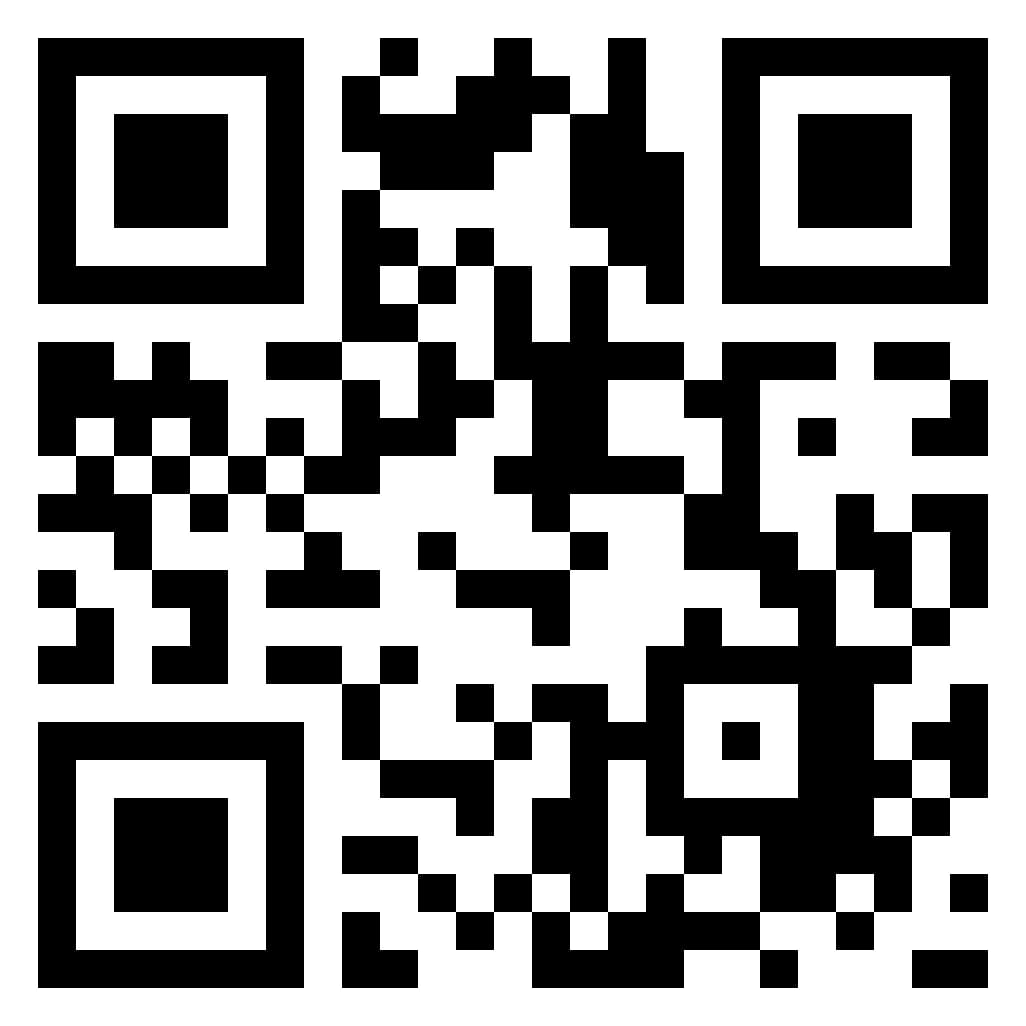
For Apple users

For Android users

- 10 April 2025 Congress Start Date
- 13 April 2025 Congress End Date
- 10 February 2025 Early Bird Registration
Abstract Submission

- 10 April 2025 Congress Start Date
- 13 April 2025 Congress End Date
- 10 February 2025 Early Bird Registration
Eye Openers

- 10 April 2025 Congress Start Date
- 13 April 2025 Congress End Date
- 10 February 2025 Early Bird Registration
Oral E-posters
- Landscape Format: Your poster should be designed in a single slide, landscape format. (16:9)
- Nomenclature: Please use generic nomenclature. Commercial or trade names should not be included in your poster.
- Social Media Handles: Social media handles are not permitted on the slide.
- Author Information: Ensure that the authors listed on your title slide match the names provided in your submitted abstract. No changes can be made after submission.
- Disclosure: A disclosure statement must be included, detailing any financial relationships with ineligible companies for all authors for the past 24 months.
Presentation Details:
- Session Assignment: Presentations will be assigned to specific monitors (e.g., Aesthetic, Eyelid, Orbit, Lacrimal) during the Friday or Saturday E-Poster sessions. Please arrive early at your assigned monitor station as indicated in the scientific programme, to ensure the session to start on time.
- Presentation Duration: Each presenter will have 3 minutes to present their preloaded E-Poster. A moderator will manage the timing and discussions. We kindly ask for your cooperation in adhering strictly to the 3-minute presentation limit. The presentation of the e-poster is requested to be executed on your single e-poster slide. Additional slides will not be permitted during presentation.
- Please upload only the pptx file for your presentation. We kindly like to stress that no prerecorded video presentation of your talk will be accepted.
- Once your file has been uploaded, please email us the download link that appears on the WeTransfer website.

- 10 April 2025 Congress Start Date
- 13 April 2025 Congress End Date
- 10 February 2025 Early Bird Registration
Panels & Debates
- Your 3 minute PowerPoint (pptx) presentation should be designed in landscape format. (16:9)
- Please use generic nomenclature. Commercial or trade names should not be included in your presentation.
- Social media handles are not permitted to be displayed on the slides.
- A disclosure statement must be included, detailing any financial relationships with ineligible companies for the past 24 months.
- Each presenter will have 3 minutes to present their preloaded PowerPoint presentation. Moderators will manage the timing and discussions. We kindly ask for your cooperation in adhering strictly to the 3-minute presentation limit.
- A warning gong will remind you that you have 10 more seconds to wrap-up your talk. Please limit your talk to 3 minutes as your microphone will be muted and the next speaker’s microphone will be switched on.
- Please upload only the pptx file for your presentation. We kindly like to stress that no prerecorded video presentation of your talk will be accepted.
- Once your file has been uploaded, please email us the download link that appears on the WeTransfer website.

- 10 April 2025 Congress Start Date
- 13 April 2025 Congress End Date
- 10 February 2025 Early Bird Registration
Registration & Accommodation
9 April 2025 15:30- 20:00
10 April 2025 06:00- 20:00
11 April 2025 06:00- 20:00
12 April 2025 06:00- 20:00
Registration
|
Registration Fee |
Before 10 February 2025 |
After 10 February 2025 |
Onsite |
| Conference registration | € 685,00 | € 785,00 | € 835,00 |
| Live course registration for meeting delegates | SOLD OUT | ||
| Live course registration for Non meeting delegates | |||
|
Gala Dinner |
95€ |
- VAT is included in the registration fees and gala dinner fee.
- Registration fees include the participation in scientific meetings of the congress, lunch, coffee breaks during the scientific meetings.
- When you click on the registration & accommodation link, you will be able to submit your application by selecting the items that are appropriate for you. Based on the information you have provided, the Conference Organisation Secretariat will send you an email to complete your registration & accommodation. Through this email, you will be able to directly contact the congress specialist and finalize your payment process. If you have any questions, you can reach the agency directly at wsopras25@globalturizm.com.tr.
Cancellations and Refunds
- Cancellations received before or on 10 February 2025 will be refunded, excluding bank commission costs.
- For cancellations made after 10 February 2025 no refund is applicable.
- All of refunds will be paid after the congress.
Accommodation
|
Hotel |
After 10 February 2025 |
|
|
SNG Room |
DBL Room |
|
| Four Seasons Hotel | 729,30 € | 796,50 € |
| Swissôtel The Bosphorus Hotel | SOLD OUT | SOLD OUT |
| Conrad Istanbul Bosphorus Hotel | SOLD OUT | SOLD OUT |
| Radisson Blu Hotel Ortaköy | SOLD OUT | SOLD OUT |
| Renaissance İstanbul Polat Bosphorus Hotel | 333,60 € | 400,80 € |
- VAT + City Tax included in the accommodation fees.
- These prices are for 1-night.
- Breakfast is included in hotel accommodation.
Cancellations and Refunds
- Cancellations received before or on 10 February 2025 will be refunded, excluding bank commission costs.
- For cancellations made after 10 February 2025 no refund is applicable.
- All of refunds will be paid after the congress.
Bank Transfer Information
| Bank Name | QNB FİNANSBANK |
| Account Name | Global Turizm Organizasyon Hizmetleri Sanayi ve Ticaret A.Ş. |
| TR IBAN | TR720011100000000064797734 |
| EUR IBAN | TR790011100000000037925601 |
| Swift Code | FNNBTRISXXX |

- 10 April 2025 Congress Start Date
- 13 April 2025 Congress End Date
- 10 February 2025 Early Bird Registration

- 10 April 2025 Congress Start Date
- 13 April 2025 Congress End Date
- 10 February 2025 Early Bird Registration
Travel Information
Useful Tips for Visitors
Here are our practical tips and some helpful information to know before you arrive in Turkey. Let us help you be prepared and informed on everything you need to know. Have a great holiday.
ATMs
ATMs can be found all around the country. All of them offer foreign language options and pay out Turkish liras. Cash withdrawal limits vary from bank to bank and are around 500$/€ to 1000$/€ TL.
Antiquities
Please note that it is strictly forbidden to export antiquities or antiques from Turkey and there are severe penalties for those who attempt to do so. In order to export such items legally it is necessary to obtain a certificate from a directorate of a museum.
Bank and Government Offices
Bank and Goverment Offices are generally open from 9:00 to 17:00 Mondays to Fridays, and close for lunch from 12:00 to 13:30.
Bargaining
These days the non-negotiable price tag reigns supreme in most of the city’s retail outlets and bargaining is becoming a dying art. Most exceptions to this rule can be found in the Grand Bazaar, especially in its carpet shops, where shopkeepers continue to take pride in practicing the ancient art of bargaining.
Exchanging Money
Foreign Exchange offices can be found throughout the country. Operating hours are mostly Monday to Friday, from 09:00 to 17:00. In the arrivals section of Istanbul Airport and Sabiha Gokcen Airport, there are 24-hour exchange offices. The exchange offices located in shopping malls and touristic areas are usually open later and on Saturdays. US Dollars and Euros are accepted in highly touristic districts like Sultanahmet and Taksim but rates are often better.
Credit Cards
Credit cards are widely used and accepted. Most hotels, car-rental agencies, shops, pharmacies, entertainment venues and restaurants will accept Visa and MasterCard; Amex isn’t as widely accepted, and Diner’s is often not accepted. Inexpensive eateries usually accept cash only.
Currency
Turkish Lira (TRY) is the official currency of Turkey and the Turkish Republic of Northern Cyprus. Turkish Lira is available in the following denominations.
Banknotes: 5, 10, 20, 50, 100, 200 TL
Coins: 1, 5, 10, 25, 50 Kurus and 1 TL
Customs Regulations
Please note that the following information is intended to cover items usually carried by tourists visiting Turkey. If you are planning a longer stay or are carrying anything unusual into or out of the country, it is best to check the regulations in more detail.
On Entry:
It is permitted to bring the following items into Turkey as duty free goods. The following allowances apply to the import of both domestic and foreign goods. Wines, tobacco and other luxury items, valuables, electronic equipment, sports equipment, medical items.On Exit:
For valuable gifts and souvenirs, such as a carpet, proof of purchase is necessary, together with receipts showing that any currency used in its purchase has been legally exchanged. Please note that it is strictly forbidden to export antiques from Turkey. Minerals can only be exported with a special document.Driving
Driving in Turkey is on the right, as in continental Europe. Turkish road signs conform to the International Protocol on Road Signs and archaeological and historic sites are indicated by yellow signs.
Drugs
Please note that bringing into or out of the country, together with consumption of, marijuana and other narcotics is strictly forbidden and is subject to heavy punishment. If you have prescribed medication, which you need to take on holiday with you, you will need a doctor’s note and a copy of your prescription which can be sent to Turkish tourism office in your country for translation.
Electricity
In Istanbul, the electricity supply is 220 volts (like in other European countries). Socket type is standard Type F (European) with two prongs. Four- and five-star hotels often provide North American-style 120 volts, 60 Hz flush-mounted sockets (points) for North American flat-prong plugs.
Emergency Numbers
The following is a list of emergency phone numbers that are available 24/7 in case of an emergency.
112 – General and Medical Emergency
110 – Fire
154 – Traffic Police
155 – Police
156 – Gendarme
158 – Coast Guard
159 – Highway Department
176 – Ministry of Culture and Tourism Communication Centre
177 – Forest Fire
183 – Missing Child / Women’s Helpline.
Medical Treatment
You will need to pay for any medical treatment which you receive in Turkey. For this reason, it is advisable to take out medical insurance before traveling.
Hospitals:
Hospitals: In Turkey, you can find world-class hospitals and medical facilities. Many doctors in Turkey speak English. In an emergency, foreigners who do not have insurance can go to any hospital, where they will not be charged.Pharmacies:
Pharmacies: Pharmacies are open Monday to Saturday from 09:00 to 19:30. Most are closed on Sundays, but there is always one pharmacy in an area that is open for 24 hours.Passports
Turks have compulsory ID cards, which they must always carry with them. Foreigners are also expected to carry such ID with them, which means that you should always keep your passport with you. Many travellers choose to carry a photocopy and leave the actual document in their hotel safe.
Pedestrian Safety
As a pedestrian, always give way to vehicles; the sovereignty of the pedestrian is recognized legally but not out on the street. Sidewalks and road surfaces are often in a poorly maintained state and some shops have basements that are accessed from the sidewalk via steep steps without barriers – watch where you are walking!
Police
There are two types of police in Turkey, civil police and military police. In many areas you will find that there is just one or the other, and that both fulfil the same function. In some places, there are also specialist tourist police. If you need to report a crime you should go to the nearest police station to where the crime occurred.
Post Office
Turkish post offices are easily recognizable by the yellow and black PTT signs. As well as selling stamps and telephone tokens and cards, some post offices will exchange cash as well as international postal orders and travellers’ checks. You will need to produce an ID card or passport when collecting your post.
Smoking
Officially forbidden in all hotels and enclosed restaurant and bar spaces.
Telephone
If you are in European İstanbul and wish to call a number in Asian İstanbul, you must dial 0216 before the number. If you are in Asian İstanbul and wish to call a number in European İstanbul, use 0212. Do not use a prefix (that is, don’t use the 0212/6) if you are calling a number on the same shore.
Country Code: 90
European İstanbul: 0212
Asian İstanbul: 0216.
Mobile Phones
Most European and Australasian phones work here; some North American phones don’t. Check with your provider. Prepaid SIM cards must be registered when purchased.
Theft & Robbery
İstanbul is relatively safe and as safe as a large metropolitan city, but don’t let İstanbul’s relative safety lull you. Take normal precautions and be particularly careful for picpocketing in crowded areas like Grand Bazaar, İstiklal caddesi and public transportation
Time Zone
Time in Turkey is given by UTC+03:00 year-round. All of Turkey is on Eastern European time, 3 hours ahead of London and Coordinated Universal Time (GMT/UTC), 7 hours ahead of New York.
Tipping
Restaurants & Bars: Usually 10% in restaurants, meyhanes (taverns), and upmarket bars; not usually necessary in lokantas (eateries serving ready-made food) or fast-food joints.
Taxis: Round taxi fares up to the nearest lira.
Hamams: Around 10% for the masseuse/masseur in a hamam, but only if you are happy with their service.
Visa
As of April 17, 2013, the electronic visa replaced the sticker visa, previously issued at the border crossings. e-Visa application is possible from any place with internet connection. Applicants just need to log on to evisa.gov.tr, provide the requested information, make the online payment (only once the application is approved), and download their e-Visa. The whole process takes no more than 10 minutes. Please note that the e-Visa is only valid when the purpose of travel is tourism or commerce. Other purposes, such as work and study, require a regular visa given by Embassies or Consulates. Since visa regulations are subject to change, please check the Turkish Foreign Ministry website regularly.
Documents Needed for Traveling to Turkey
We cannot guarantee the accuracy of this information. Please check the requirements in advance with the Foreign Office or responsible department of state in your country. Regularly check official websites like www.mfa.gov.tr for updates, as regulations regarding visas and COVID-19 may change.
EU, EEA and Swiss Citizens
Countries whose citizens are allowed to enter Turkey with their national ID’s:
- Germany
- Belgium
- France
- Georgia
- The Netherlands
- Spain
- Switzerland
- Italy
- Turkish Republic of Northern Cyprus
- Liechtenstein
- Luxemburg
- Malta
- Portugal
- Ukraine
- Greece
Switzerland: Ordinary and official passport holders are exempted from visa for their travels up to 90 days.
US Citizens
Applying for a Turkish visa for US citizens no longer means going in-person to a national embassy or consulate or obtaining a visa on arrival at the border. It is now possible for nationals of the USA to obtain a Turkish electronic visa (e-Visa) instead of the traditional ‘stamp’ or ‘sticker’ visa. This modern and convenient system makes it easy to apply for a Turkey visa online from the US, reducing long lines at immigration checkpoints and allowing for expedited entry at the Turkish border. The Turkey e-Visa for US citizens can be used for both tourist visits and business travel, as well as to transit through Turkey to an onward destination. It grants its holder a stay of up to 3 months in the country. American citizens should note that they may need to obtain additional documents to visit Turkey during the ongoing COVID-19 pandemic.
Australian Citizens
Yes, Australians need a visa to travel to Turkey. A Turkish visa is required even for short stays in the country. Australian tourists and business travellers can get a Turkish visa online, provided they meet all the eligibility requirements. With the approved Turkish eVisa, Australian passport holders can stay in Turkey for up to 90 days. It is a multiple-entry permit.
Exchanging Money
Foreign Exchange offices can be found throughout the country. Operating hours are mostly Monday to Friday, from 09:00 to 17:00. In the arrivals section of Istanbul Airport and Sabiha Gokcen Airport, there are 24-hour exchange offices. The exchange offices located in shopping malls and touristic areas are usually open later and on Saturdays. US Dollars and Euros are accepted in highly touristic districts like Sultanahmet and Taksim but rates are often better.

- 10 April 2025 Congress Start Date
- 13 April 2025 Congress End Date
- 10 February 2025 Early Bird Registration
Transportation Information
Transportation to Airports in Istanbul
Istanbul, one of the world's major metropolises, boasts a comprehensive transportation network with two major airports: Istanbul Airport and Sabiha Gökçen Airport. Access to these airports is facilitated by various transportation options within the city.
Istanbul Airport
- Havaist Buses: One of the most popular options for reaching Istanbul Airport is the Havaist buses. These buses, departing from many points across the city, provide comfortable and quick transportation. They offer direct services from central areas like Taksim, Beşiktaş, and Kadıköy. Taksim stop is the closest stop for the congress center
- Metro: The M11 metro line, which became operational in 2023, provides direct access from Gayrettepe to Istanbul Airport. This line is integrated with connections from various parts of the city, offering a fast transportation option. Taksim and Osmanbey stop is the closest stop for the congress center
- Taxi and Private Vehicle: Taking a taxi to the airport is quite common in Istanbul. Additionally, those traveling by private car will find extensive parking facilities. Navigational systems and road signs make it easy to reach the airport.
- Car Rental: Many car rental companies are available at the airport. Renting a car is another flexible alternative for tourists or business travellers.
- Uber: You can easily reach your desired destination within the city by downloading the Uber app on your phone. The app allows you to request a ride from your current location to any destination, offering a convenient and reliable transportation option with real-time updates.
Sabiha Gökçen Airport
- Havabus Buses: Havabus buses departing from central points like Kadıköy, Taksim, and Yenisahra transport passengers directly to Sabiha Gökçen Airport. They offer a comfortable and affordable transportation alternative. Taksim stop is the closest stop for the congress center
- Metro: The M4 metro line, which runs to Tavşantepe Metro Station, ends close to Sabiha Gökçen Airport. From there, you can take E10 and E11 municipal buses or a taxi to the airport. Taksim and Osmanbey stop is the closest stop for the congress center
- Taxi and Private Vehicle: It is possible to reach Sabiha Gökçen Airport by taxi from both the Asian and European sides of the city. For those traveling by private vehicle, there are extensive parking facilities available at the airport.
- Car Rental: Various car rental services are available at the airport. This service is especially suitable for visitors planning a longer stay in the city.
- Uber: You can easily reach your desired destination within the city by downloading the Uber app on your phone. The app allows you to request a ride from your current location to any destination, offering a convenient and reliable transportation option with real-time updates.
Transportation to airports in Istanbul is highly accessible and convenient for both locals and tourists, thanks to the variety of available options. Whether you prefer public transport or private vehicle, you can easily reach the airports in Istanbul.
Sea Transportation in Istanbul
- Sea Taxi: To use the Sea Taxi in Istanbul, you need to download the IBB Sea Taxi app. This private boat service allows you to travel quickly and directly across the Bosphorus or other waterways, offering a scenic and fast alternative to road transport. Reservations can be made easily through the app.
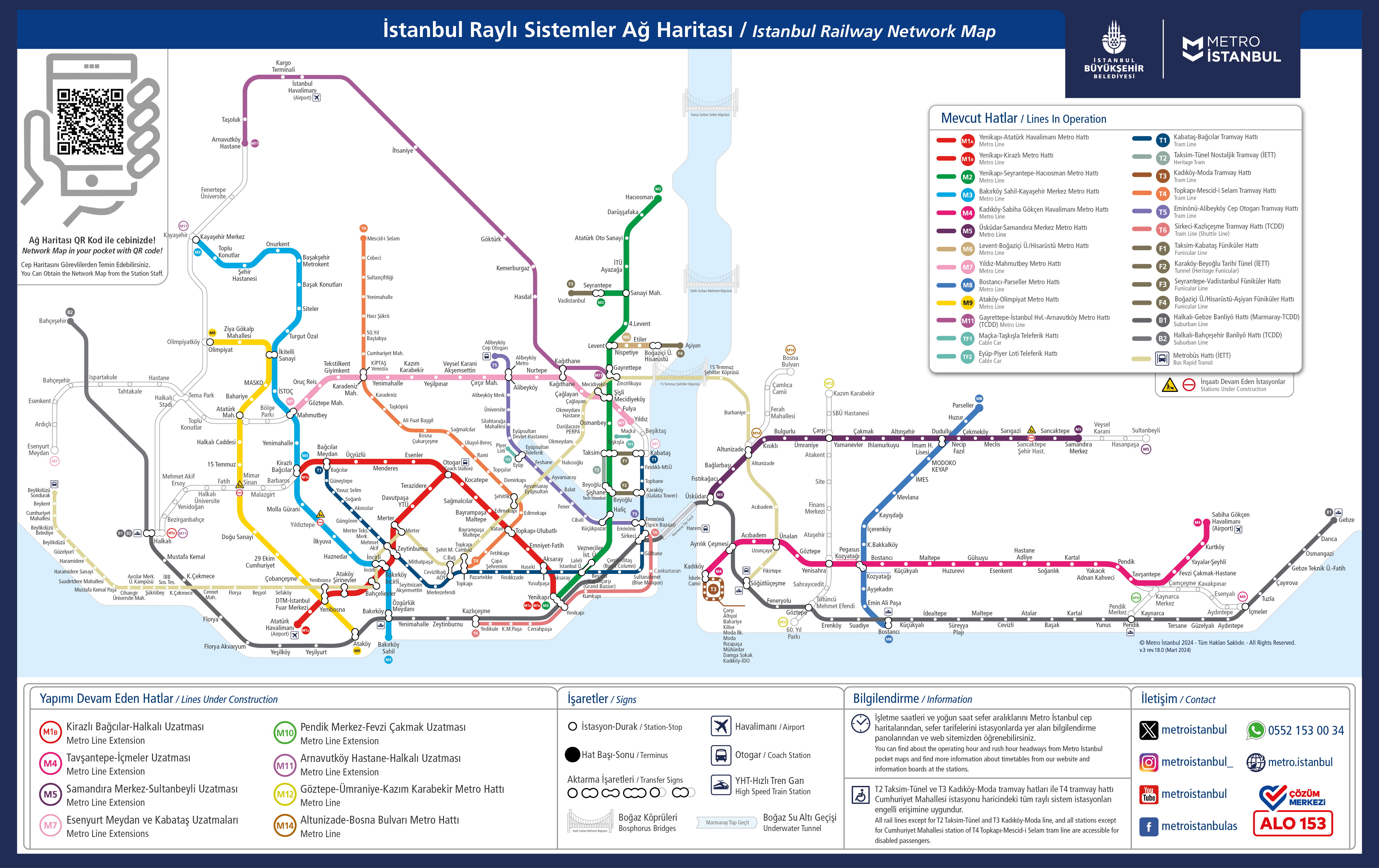

- 10 April 2025 Congress Start Date
- 13 April 2025 Congress End Date
- 10 February 2025 Early Bird Registration
Congress Venues

- 10 April 2025 Congress Start Date
- 13 April 2025 Congress End Date
- 10 February 2025 Early Bird Registration
